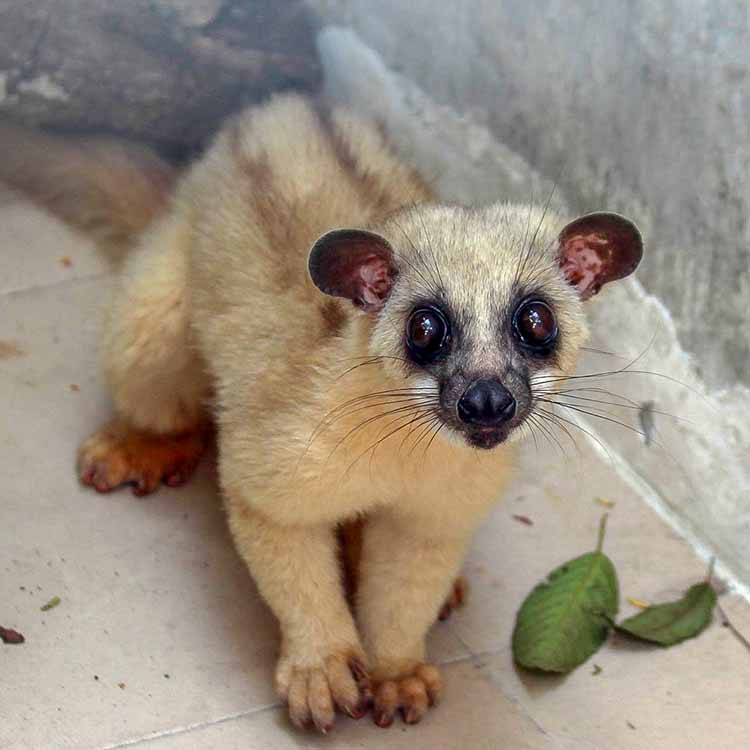Javan slow loris
Nycticebus javanicus
IUCN: CR (Critically Endangered)
Endemic to west and central Java, the Javan slow loris is a small and stocky arboreal nocturnal primate. They will eat insects, small lizards, eggs, fruits, and the gum from trees which it accesses by biting through the bark until it seeps out. They face major threats from habitat loss and poaching, for both the wildlife trade and traditional medicines.
Spotted giant flying squirrel
Petaurista elegans elegans
IUCN: LC (Least Concern) assessed as species A Javan subspecies of the spotted giant flying squirrel facing threats from habitat loss and the wildlife trade. Primarily found in the forests of hills and mountains, they are nocturnal and use skin flaps between their legs to glide through forest openings. One offspring is usually born.
Black-tailed red giant flying squirrel
Petaurista petaurista nigricaudata
IUCN: LC (Least Concern) assessed as species
A Javan subspecies of the red giant flying squirrel characterised by a dark tail, they face threats from habitat loss and the wildlife trade. They are one of the largest and longest of the giant flying squirrels. They mainly eat fruits and leaf foliage high up in the trees, occasionally taking protein such as eggs.
Sunda pangolin
Manis javanica
IUCN: CR (Critically Endangered)
Found throughout southeast Asia, the Sunda pangolin faces significant threats from the wildlife trade where it is mainly captured for traditional medicine. They lack teeth, and their diet consists of termites and ants which they take using their long sticky tongue.
Javan small-toothed palm civet
Arctogalidia trivirgata trilineata
IUCN: LC (Least Concern) assessed as species
The Javan subspecies of the small-toothed palm civet has a very limited range in west Java. The coat colour can be a blond or a chestnut brown, as well as numerous shades inbetween. They are highly frugivorous, though will also take eggs, insects, and other small animals they might find whilst foraging for fruit high up in the trees. Highly arboreal and nocturnal, they are rarely surveyed in the wild. This subspecies faces significant threats from habitat loss and capture for the wildlife trade. PCBA runs a successful ex-situ breeding programme and is the only facility to house this threatened Indonesian subspecies.
Indonesian mountain weasel
Mustela lutreolina
IUCN: LC (Least Concern)
The Indonesian mountain weasel is beginning to face threats from the wildlife trade where it is captured as a cute pet. It has a very limited range on several Indonesian mountains in Java and Sumatra, localised populations with no interactions between one another. Little is known overall about the species. PCBA focuses on one locality only, holding the only ex-situ population in the hope that more can be learned about them.
Javan warty pig
Sus verrucosus
IUCN: EN (Endangered)
Javan warty pigs are endemic to the island of Java where they are dealing with habitat loss, hunting, persecution, and potential hybridisation with the wild boar. PCBA holds a number of pigs from the breeding programme including new founder stock, which will provide new genetics for the ex-situ population. The pigs are kept in a dedicated pig facility, as well as a large enclosed semi-wild environment where they are monitored and cared for.








